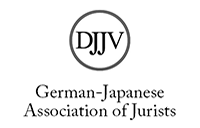Zaibatsu Break-ups
The Legacy of Post-war Economic Reform in Japan and Digital Economies
Abstract
After World War II, Japan underwent economic reform; large conglomerates, known as zaibatsu, and 18 dominant companies were broken up in order to restore competition. Combined with the newly implemented competition law, the Antimonopoly Act (AMA), this economic reform established an economic system based on free competition. The AMA includes several characteristics that reflect Japan’s economic history, including concerns about aggregated economic power and a disparity of bargaining power. The Japan Fair Trade Commission (JFTC) also has the authority to take measures to restore competition without finding wrongdoing. At the same time, the JFTC experienced a lack of political support and difficulties for decades after the enactment of the AMA, which also influenced the way the AMA is enforced. For mergers and unilateral conduct, the JFTC tends to opt for soft approaches, encouraging businesses to comply with the AMA through its guidelines and through voluntary commitments.
Currently, data accumulation, network effects and substantial economies of scale are creating significant competition law issues in the country. Outside Japan, lawmakers and competition authorities are considering strengthening their competition law regimes and introducing structural measures to restore competition. In Japan, the features of the AMA, as described above, should make it easy for the JFTC to counter the current challenges. In reality, however, the JFTC is not making full use of its legal tools to address these challenges. The lack of formal cases also undermines the effectiveness of the AMA regulatory regime.
To revitalise competition policy in the modern digitalised economy, the JFTC needs to change how the AMA is enforced, moving from an administrative-guidance-based soft approach to a tougher one. AMA provisions relating to the excessive concentration of economic power and monopolistic situations also need to undergo digital transformation by focusing on more extensive network effects and the capability to access vast amounts of personal data. Where concentration is taking place at a global scale and Japan is a part of it, the AMA threshold of intervention needs to be changed to refer to global turnover, rather than the total assets held in Japan. Enhancing the JFTC’s capability to collect evidence from foreign jurisdictions and ensuring that foreign companies comply with JFTC orders are also essential.






